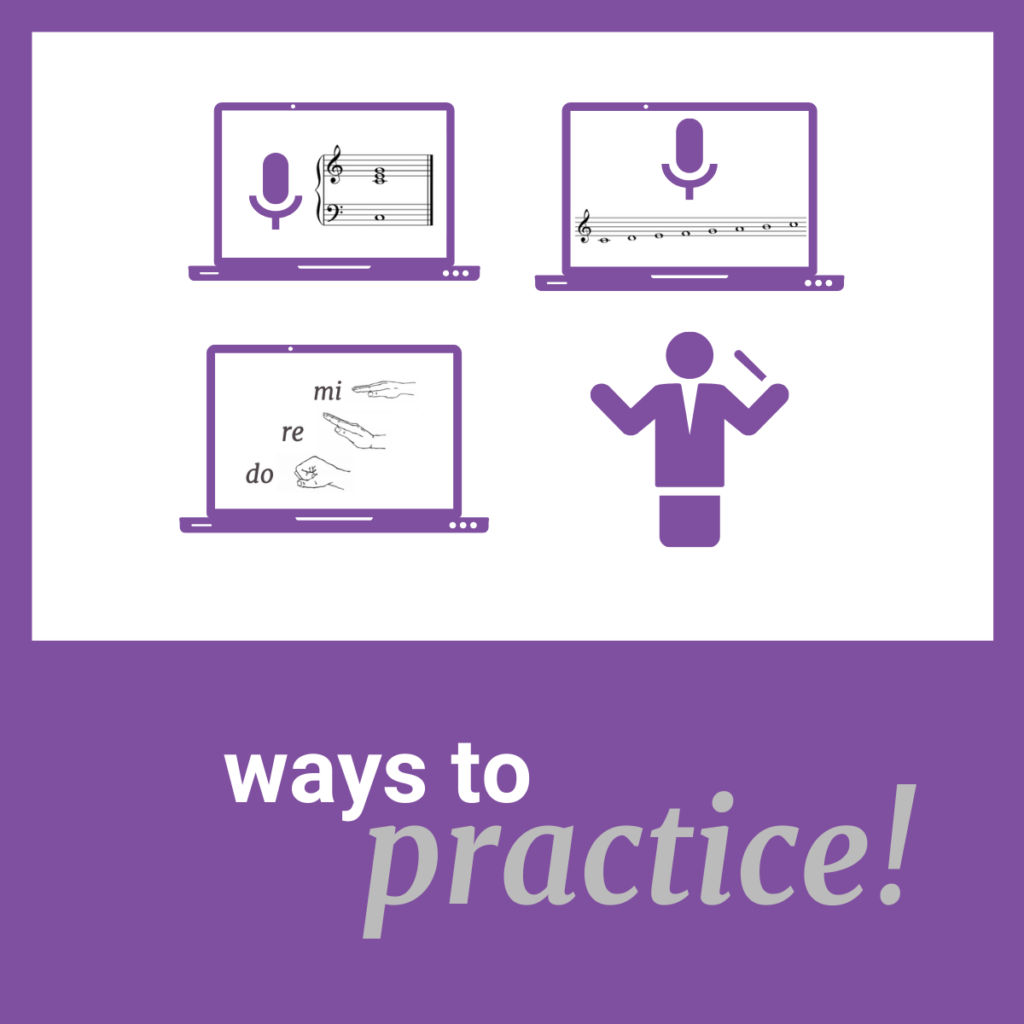Ways to Practice
Everything you need to strengthen your musicianship skills

Although this course is designed to get you practicing these concepts regularly to build incremental understanding and musicianship muscle memory, there are lots of other ways to challenge yourself and make sure you really Know this stuff.
Practicing well is scaffolding deliberate and consistent effort over a period of time – it’s also the opportunity to apply what you’re learning, which is vital.
Some practice ideas are outlined below, according to the concept area.
Rhythm
- say Rhythm Names aloud while walking the beat (on the spot) and tapping the rhythm (and vica versa)
- say rhythm names aloud while Conducting with your right hand, and tapping any semiquavers with your left hand
- say rhythm names aloud while tapping an ostinato
- say rhythm names aloud while Inner Hearing specific elements to highlight these
- say rhythm names aloud while clapping all rhythms except semiquavers, which are clicked
- say rhythm names aloud while clapping in canon
Scales
- sing all known scales in Solfa with Handsigns, from the same bottom/top (descending then ascending) note
- sing all known scales in Letter Names beginning on any chosen note, from the same bottom/top note
- sing scales while handsigning in canon (two notes after you begin singing)
- sing known scales in solfa with handsigns, with a partner who does the same task beginning two notes after you: in canon
- sing known scales in solfa with handsigns, inner hearing all tonic and dominant notes
Intervals
- sing one melody in solfa with handsigns – labelling the interval that is created by each pair of consecutive notes
- sing a melody, showing the handsigns, inner-hearing all solfa
- sing all ascending & descending 3rds in the Major scale in solfa with handsigns, e.g. do mi Major 3rd, re fa minor 3rd, mi so minor 3rd etc.
- sing all ascending & descending 3rds in the melodic minor scale in solfa with handsigns e.g. la do minor 3rd, ti re minor 3rd, do mi Major 3rd etc.
Melody
- sing melodies in known scales and modes in solfa with handsigns
- create your own clever echo activities with a partner
- Compose a melody and sing in solfa with handsigns
- sing melodies in known scales and modes in letter names in various keys
- sing melodies in known scales and modes in solfa with handsigns, inner hearing all notes that belong to the Dominant 7th chord
Chords and Chord Progressions
- sing all known triads and chords ascending descending in solfa with handsigns, labeling the intervals created by all included notes
- sing basslines of chord progressions in solfa with handsigns
- sing chord progressions vertically (each chord one note at a time ascending and descending)
- sing Major and harmonic minor Chord Charts
Important note:
This isn’t an exhaustive list, and certainly you need to find practice strategies that work for you and your routine. Here are some other less obvious ways you could squeeze some practice in:
- laminate a practice chart or a weekly plan and bluetac it to the (outside of the) shower screen so you can practice in the shower
- use inner hearing to practice tasks (or have “Deb in your ear” i.e. listen to the practice videos etc. using your phone) while you are “stuck” somewhere e.g. in a bus/train/car, while you walk somewhere, while you are trying to get to sleep etc.
Read on for more….
Just like when you practice playing your instrument or singing, it works best when you chunk tasks, incorporate a variety of approaches – don’t just do it the same way over and over again – and efficiently use your time. An hour of crammed practice the day before an exam is no replacement for 5 minutes most days a week!
This video has ALMOST everything you need to help you practice

